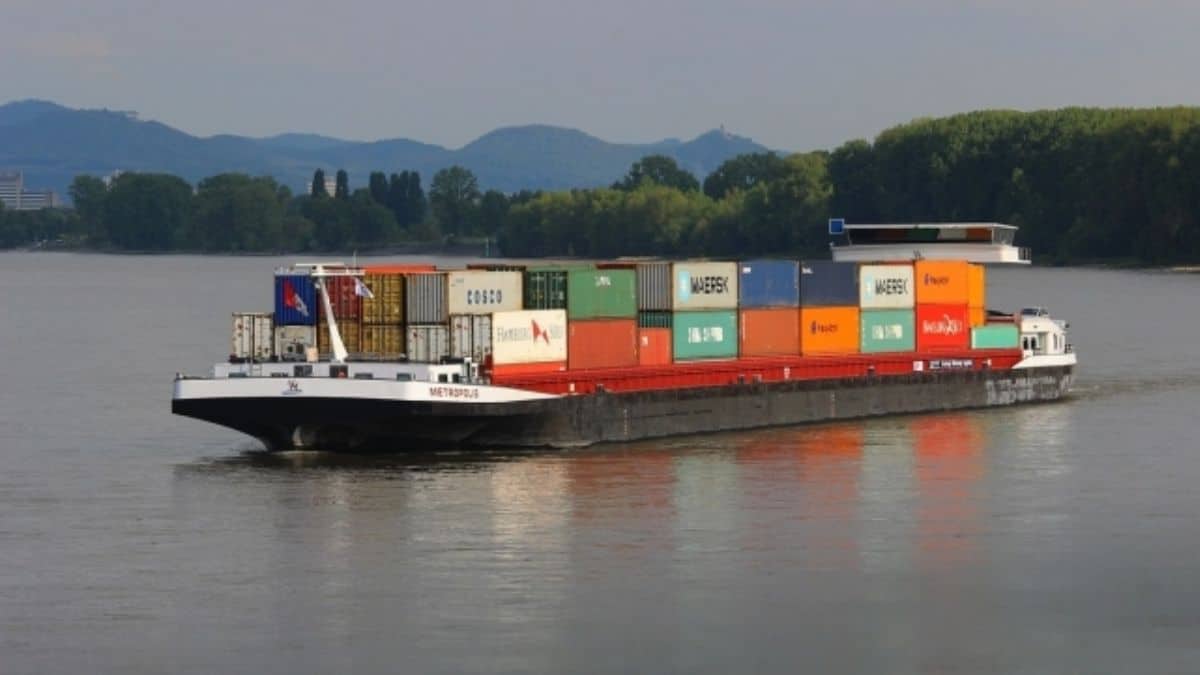 Image Credits - ITLN
Image Credits - ITLN
India’s inland waterways have experienced a notable increase in cargo movement, with a 5% surge reported for the financial year 2024 (FY24). This growth underscores the country’s ongoing efforts to leverage its extensive river network for more efficient and eco-friendly transportation of goods.
The Inland Waterways Authority of India (IWAI) released data showing a significant uptick in the volume of cargo transported across major rivers, including the Ganga, Brahmaputra, and Godavari. This growth is attributed to a series of government initiatives aimed at promoting waterways as a viable alternative to traditional road and rail transport.
Key drivers of this increase include improvements in navigational infrastructure, such as the dredging of riverbeds to facilitate larger vessels and the modernization of ports and terminals. These upgrades have enhanced the capacity and reliability of water-based logistics, making them more attractive to shippers and logistics companies.
The government’s push to develop National Waterways (NWs) has played a crucial role in this growth. With 111 NWs identified for development, significant investments have been made in enhancing connectivity and ensuring smooth operations. The successful implementation of projects like the Jal Marg Vikas Project on the Ganga River has been instrumental in boosting the movement of goods.
In addition to infrastructure improvements, policy measures such as the waiver of waterway usage charges have incentivized companies to shift cargo transport to waterways. This shift is part of a broader strategy to reduce the environmental impact of freight transport, as waterway transport is considered more sustainable compared to road and rail.
The increase in cargo movement via waterways also reflects a growing awareness among businesses of the cost and time efficiencies associated with this mode of transport. It has proven particularly beneficial for bulk commodities, including coal, steel, and agricultural products, which are more economical to transport in large volumes.
Looking ahead, the IWAI and other stakeholders are optimistic about sustaining and accelerating this growth trend. Plans are in place to further develop infrastructure, introduce more advanced technologies, and expand the fleet of vessels capable of navigating India’s rivers. Additionally, efforts are being made to integrate waterway transport with other modes, such as rail and road, to create a seamless and multimodal transport network.
The increasing use of inland waterways is also expected to have positive economic impacts, including the creation of new jobs in the shipping and logistics sectors. Moreover, by alleviating congestion on roads and railways, this shift can lead to broader societal benefits, including reduced air pollution and lower transportation costs.
Overall, the continued development of India’s inland waterways is seen as a critical component of the country’s broader transportation strategy, aimed at enhancing trade efficiency, supporting economic growth, and achieving environmental sustainability. As these initiatives progress, India’s waterways are poised to play an increasingly significant role in the nation’s logistics landscape.
